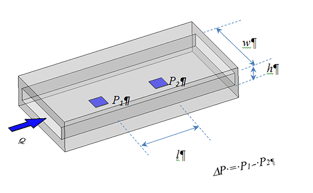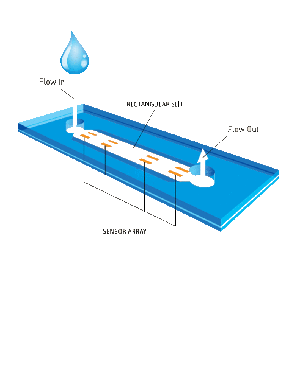I recently had a customer who asked how VROC® technology measures viscosity compared to a rheometer that can measure shear stress and also control shear rate.
Before explaining how our VROC viscometers compare to a rheometer, it is important to explain the difference between a rheometer and a viscometer, and how our VROC technology makes our viscometers different from others on the market.
A rheometer is an instrument used to measure the way a liquid flows in response to applied forced, whereas a viscometer is an insturment used to measure the viscosity of a fluid. Traditional viscometers only measure viscosity under one flow condition and rheometers are used to measure rheology of fluids that cannot be defined by the single value viscosity. From the controls, the rheometer will calculate viscosity.
RheoSense is revolutionizing material characterization with our VROC® (Viscometer-Rheometer-on-a-Chip) technology, combining microfluidic and MEMS (Micro-Electro-Mechanical Systems) technologies to measure dynamic viscosity over a wide dynamic range of operation. allowing complete characterization of viscosity as a function of shear rate or temperature. Unlike traditional viscometers which only approximate appearent properties of materials, VROC quantifies true viscosity of fluids.
 Similar to the rheometer, VROC powered viscometers will measure the pressure drop to measure shear stress and use flow rates to control the flow. Essentially the ideas are parallel in the fact that VROC measures the pressure drop and rheometers will measure torque so you will not need to readjust your expectations when working with VROC technology.
Similar to the rheometer, VROC powered viscometers will measure the pressure drop to measure shear stress and use flow rates to control the flow. Essentially the ideas are parallel in the fact that VROC measures the pressure drop and rheometers will measure torque so you will not need to readjust your expectations when working with VROC technology.
Additional comparisons and benefits of using VROC® would be:
- Require just a few micro-liters per measurement
- Allow characterization of both Newtonian & non-Newtonian fluids
- Enable high shear rates without flow instabilities
- Prevent evaporation and contamination of samples
- Render high throughput due to a simple flow-through design
VROC technology, rectangular slit type viscometer, is listed as a public standard under the US Pharmacopeia chapter <914> Viscosity — Pressure Driven Methods as Method I.
For more information on our technology, visit our technology page here.
*Check out our application note where we compare the cone and plate rheometer with VROC powered, m-VROC!
Written by: Grace Baek, RheoSense Operations Manager



COMMENTS